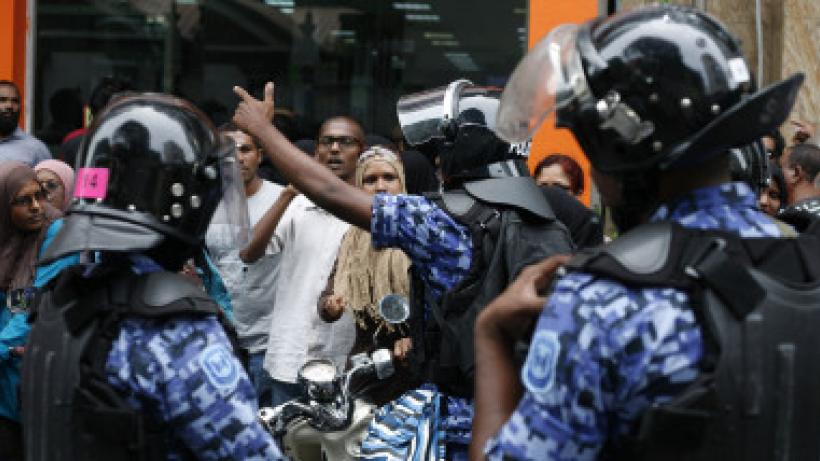
Can workfare programmes moderate violence?
It is common in developing countries for income shocks to trigger spurts of violence. Important findings suggest that the United Progressive Alliance (UPA) government’s Rural Employment Guarantee (MNREGA) programme has had a moderating effect on the intensity and incidence of terrorist violence in India
India has faced many internal security challenges since its independence. In recent years, Prime Minister Manmohan Singh has described Naxalism as the greatest threat to internal security. But this is not the only conflict that perturbs India’s development. Regular spurts of violence occur in the northeast, south and central India, where various movements strive for more political representation, independence or equality. This pattern does not seem to have changed much in recent years—if anything, there appears to have been an intensification in violence (see Figures 1 and 2). While the individual motives may vary, it is well established in the scholarly literature that income shocks may trigger spurts of violence as it is easier for violent movements to gain support in an environment of need and hardship.
Figure 1. Heat map of regions affected most by terrorist attacks before 2006 (left) and after 2006 (right).

So how can the Indian state address this vicious cycle? Clearly, the important overarching goal is to make India’s economy more resilient against shocks. This has been a long standing goal of Indian development policy, fostering the construction of dams, irrigation canals and more robust crop varieties. But despite these efforts, India’s economy is still heavily dependent on whether a monsoon proves to be a good or bad one. But there are some shocks that cannot be dealt with through the construction of physical infrastructure or the adoption of new technologies.
Figure 2. Number of terrorist incidents over time.

There is a limit to the extent that new physical infrastructure can moderate a lack of rainfall, for example. These are shocks that will need to be cushioned through a social security scheme. Such a scheme was introduced through the Mahatma Gandhi National Rural Employment Guarantee Act (MGNREGA) introduced in 2004.
The empirical analysis provides results that suggest the scheme designed under MGNREGA works in the way it was supposed to: namely as an insurance against shocks for which there is otherwise no insurance market.
Moderating the relationship between conflict and monsoon rainfall
My research documents three key findings. Firstly, I highlight that there exists a strong relationship between agricultural GDP and monsoon rainfall — a one per cent increase in monsoon rainfall increases agricultural GDP by 0.45 per cent. It is this relationship that makes conflict levels dependent on monsoon rainfalls across India.
I contrast the relationship between monsoon rainfall and intensity and incidence of terrorist violence at the district level before and after the introduction of MGNREGA. The results are stark, suggesting that the overall relationship between monsoon rainfall and conflict disappeared after the employment scheme was introduced.
Figure 3. Phase 1 Districts: Effect of rainfall on violence over time. The overall relationship between monsoon rainfall and conflict disappeared after the employment scheme was introduced

The findings suggest that MGNREGA is a potential antidote to the cyclical nature of terrorist violence. But the research should not stop at this headline finding. Does the demand for employment under MGNREGA follow the seasonal pattern and does it correlate with a lack of rainfall? That is to say: does a lack of rainfall increase take-up, indicating that the scheme effectively works as an insurance against a poor monsoon? Further, does MGNREGA moderate agricultural wages in general? If this is the case, then the benefits from MGNREGA would spill out to people who do not directly participate and work under MGNREGA but are still are able to benefit from more stable wages. My research offers the following answers to these two important questions.
MGNREGA works as insurance
My key finding is that MGNREGA employment increases dramatically if monsoon rainfalls turned out to be poor. A one per cent increase in monsoon rainfall reduces participation in the scheme by 0.458 per cent. That is: people demand MGNREGA employment when agricultural output and GDP is low.
Cushioning real wages
The second major observation of my research is that MGNREGA moderates the responsiveness of agricultural wages with respect to monsoon rainfall. Before MGNREGA is introduced, a bad monsoon resulted in low wages, especially during the harvest season. However, this relationship disappears once the employment scheme is introduced.
Important implications
These findings have important implications when evaluating the fiscal costs of MGNREGA for the Indian state. Clearly, the scheme has developed into a major fiscal burden as each year the cost of hundreds of millions of person days of work are being borne by the state and the Indian tax payer. However, the key result presented here suggests that the benefits of the programme extend beyond participants to include those who do not directly enrol in the employment scheme. Through its stabilising effect on agricultural wages, MGNREGA allows individuals who do not themselves participate to benefit from higher wages. Further research should examine whether private enterprises are negatively impacted by employment schemes, since it is clear that they join the Indian state in bearing the cost of MGNREGA.

